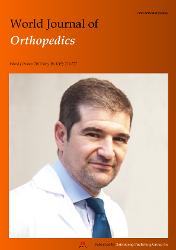| dc.contributor.author | Altun, Güray | |
| dc.contributor.author | Saka, Gürsel | |
| dc.contributor.author | Demir, Teyfik | |
| dc.contributor.author | Erbay Elibol, Fatma Kübra | |
| dc.contributor.author | Polat, Mehmet Orçun | |
| dc.date.accessioned | 2020-10-06T10:46:53Z | en_US |
| dc.date.available | 2020-10-06T10:46:53Z | en_US |
| dc.date.issued | 2019 | en_US |
| dc.identifier.issn | 2218-5836 | en_US |
| dc.identifier.uri | https://hdl.handle.net/20.500.12469/3461 | |
| dc.identifier.uri | https://doi.org/10.5312/wjo.v10.i5.219 | |
| dc.description.abstract | Background: The purpose of open reduction and internal fixation of acetabulum posterior wall fractures is to restore anatomical structure and stability of the hip joint, in order to start weight bearing as soon as possible and prevent hip arthrosis; restoration of the anatomy should preserve function of the joint as well. Although "special shaped precontoured plates" have been developed in recent years for surgical treatment of this region, studies comparing the traditional plates with the newly designed precontoured plates are lacking.
Aim: To evaluate the biomechanical properties of precontoured anatomic buttress and conventional curved reconstruction plates (CCRPs) for posterior wall acetabulum fracture treatment.
Methods: Twelve pelvis models were created for testing plate treatment of fracture in the posterior wall of the acetabulum. These 12 pelvis models were used to create 24 hemipelvis models (experimental) by cutting from the sagittal plane and passing over the center of gravity, after which the posterior wall acetabular fractures (of similar type and size) were created. In these experimental models, the right acetabulum was fixed with a 5-hole CCRP, while the left was fixed with a precontoured anatomic buttress plate (PABP). Samples were placed through the test device and were subjected to static load testing, with a constant testing velocity of 2 mm/min until the load reached 2.3 kN or the acetabular fixation failed. Dynamic tests were also performed with sinusoidal wave load, with a maximal load of 2.3 kN and a load ratio of 0.1.
Results: The average stiffness values were 460.83 ± 95.47 N/mm for the PABP and 291.99 ± 118.58 N/mm for the 5-hole CCRP. The precontoured anatomic acetabulum buttress plates had significantly higher rigidity than the CCRPs (P = 0.022). There was a statistically significant difference between the unloaded and 2.3 kN-loaded values of AL (posterosuperior fracture line vertical to the ground surface) and CL (posteroinferior fracture line vertical to the ground surface) parameters for both the PABPs and the 5-hole CCRPs (P = 0.036 and P = 0.045, respectively). According to the static tests, the amount of total displacement was significantly less in the PABPs than in the CCRPs. Comparative analysis of the displacement in the BL (posterior wall fracture line horizontal to the ground) parameter yielded no statistically significant differences between the PABP and the 5-hole CCRPs (P = 0.261).
Conclusion: PABP provides more stable fixation in acetabulum posterior wall fractures than 5-hole CCRP, allowing for proximal or distal fracture line screw application without reshaping. | en_US |
| dc.language.iso | eng | en_US |
| dc.publisher | Baishideng Publishing Group Inc. | en_US |
| dc.rights | info:eu-repo/semantics/openAccess | en_US |
| dc.subject | Acetabular fracture | en_US |
| dc.subject | Anatomical plate | en_US |
| dc.subject | Biomechanical study | en_US |
| dc.subject | Posterior wall fracture | en_US |
| dc.subject | Precontoured plate | en_US |
| dc.title | Precontoured buttress plate vs reconstruction plate for acetabulum posterior wall fractures: A biomechanical study | en_US |
| dc.type | article | en_US |
| dc.identifier.startpage | 219 | en_US |
| dc.identifier.endpage | 227 | en_US |
| dc.relation.journal | World Journal of Orthopedics | en_US |
| dc.identifier.volume | 10 | en_US |
| dc.identifier.wos | WOS:000468909800001 | en_US |
| dc.identifier.doi | 10.5312/wjo.v10.i5.219 | en_US |
| dc.identifier.scopus | 2-s2.0-85066901132 | en_US |
| dc.institutionauthor | Polat, Mehmet Orçun | en_US |
| dc.relation.publicationcategory | Makale - Uluslararası Hakemli Dergi - Kurum Öğretim Elemanı | en_US |
| dc.identifier.pmid | 31149562 | en_US |

















